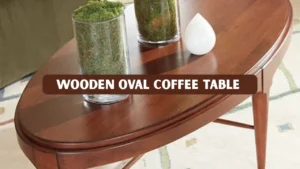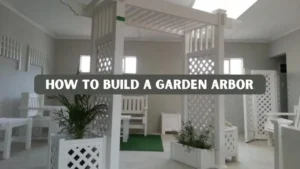A canopy wood bed is more than just furniture; it is a combination of style, craftsmanship, and personal expression. Whether you want to give your bedroom a luxurious centerpiece or undertake a rewarding DIY project, building a canopy bed from wood provides both functionality and elegance. This comprehensive guide covers everything you need, from selecting the right wood and tools to assembly, finishing techniques, and design ideas to ensure your project is successful.
Crafting your own bed allows for a custom piece that fits your space perfectly. Unlike pre-made beds, a DIY bed gives you the freedom to tailor dimensions, design elements, and finishes according to your taste. Following best practices and using reliable woodworking methods ensures durability and a professional finish that can last for years.
Key Takeaways
- Canopy wood beds are elegant and customizable pieces that add style and functionality to any bedroom.
- Using the right type of wood and tools ensures durability and a professional finish.
- Step-by-step guidance simplifies the construction process, making it accessible for DIY woodworking enthusiasts.
- Incorporating finishing touches like sanding, staining, and decorative elements can transform your bed into a statement piece.
- Case studies demonstrate how real DIY enthusiasts successfully created their own beds.
Why Choose a Canopy Wood Bed
- Durability and Longevity: Using solid wood guarantees a stable frame that can last for decades. This ensures that your investment in a quality bed provides long-term value without frequent repairs or replacements.
- Customizable Designs: Tailor dimensions, finishes, and decorative elements to suit your space. You can personalize every detail to match your bedroom decor and individual style preferences.
- Aesthetic Appeal: Creates a luxurious, timeless look in any bedroom setting. A well-designed wooden bed instantly becomes the focal point of the room, enhancing overall interior appeal.
- Functional Benefits: Supports fabric drapes, lights, or decorative items for enhanced privacy and style. This functionality allows you to create cozy, intimate spaces or ambient lighting for relaxation.
- Enhanced DIY Experience: Combining woodworking techniques with a practical project boosts skill development. Completing the project successfully also provides a sense of accomplishment and confidence in your DIY abilities.
Materials and Tools Needed
Wood Selection
- Oak: Strong and ideal for structural support. Its natural hardness and attractive grain pattern make it perfect for creating a sturdy and visually appealing bed.
- Maple: Smooth finish and excellent for staining or painting. Maple’s fine texture allows for clean edges and intricate details, making it ideal for custom designs.
- Pine: Affordable, easy to work with, and ideal for beginner projects. Pine is lightweight and forgiving, which helps new DIY builders achieve precise cuts and assembly.
- Teak: Highly durable and naturally resistant to moisture. Its weather-resistant properties and rich color make it an excellent choice for long-lasting, high-quality furniture.
Tools Required
- Wood lathe for crafting decorative posts and finials. A lathe allows you to create elegant, symmetrical designs that enhance the overall style.
- Miter saw and circular saw for precise cuts. These tools ensure accurate angles and straight edges, which are essential for a stable and professional-looking frame.
- Drill and screws for assembly. Using the right drill and screws prevents wood splitting and ensures a strong, long-lasting connection between all bed components.
- Clamps and measuring tape for accuracy. Clamps hold pieces securely while you work, and precise measurements guarantee that every part fits perfectly.
- Sandpaper, stain, or finish for a polished look. Sanding smooths rough surfaces, while staining or finishing protects the wood and enhances its natural beauty.
Pro Tip: Using a lathe for posts adds elegance and professional quality to your canopy wood bed.
Step by Step Instructions
1: Designing Your Bed
- Measure your room and mattress dimensions carefully. Accurate measurements ensure the bed fits perfectly in your space and leaves enough room for walking and additional furniture.
- Sketch the headboard, footboard, side rails, and canopy frame. Creating a visual plan helps you organize materials, visualize proportions, and identify potential construction challenges.
- Choose a style: modern, rustic, or classic. Selecting a style early guides your choice of wood, finishes, and decorative details, making the final design cohesive.
- Ensure that the design includes room for finishing touches and decorative elements. Planning for extra features like fabric drapes, carved posts, or lighting ensures a polished and functional final piece.
2: Cutting and Preparing Wood
- Cut all pieces accurately based on your design plan. Precise cuts ensure that all parts fit together seamlessly and reduce the risk of gaps or misalignment during assembly.
- Sand edges and surfaces to remove roughness and splinters. Proper sanding creates a smooth finish that is safe to touch and ready for staining or painting.
- Pre-drill screw holes to prevent the wood from splitting during assembly. This step also makes it easier to insert screws straight and ensures a stronger, more secure connection.
3: Assembling the Frame
- Begin by assembling the headboard and footboard. Ensuring these main components are sturdy first creates a solid foundation for the rest of the bed frame.
- Secure side rails using screws or brackets. Properly fastening the side rails adds stability and prevents wobbling or shifting over time.
- Verify that corners are square and level before proceeding. Using a carpenter’s square and level guarantees that the frame is aligned correctly, which is crucial for attaching the canopy posts later.
4: Adding the Canopy
- Attach vertical posts to all four corners of the bed frame. Make sure each post is plumb and securely anchored to provide a strong support for the canopy structure.
- Connect the top frame for the canopy structure. Check that all joints are tight and aligned so that the frame is stable and can support additional elements like curtains or lights.
- Test stability by applying gentle pressure to ensure firmness. Inspect for any wobbling or loose connections and reinforce them if needed to guarantee safety and durability.
5: Sanding, Staining, and Finishing
- Sand all surfaces thoroughly for a smooth finish. Proper sanding removes imperfections and ensures the wood absorbs stain or paint evenly for a professional look.
- Apply stain or paint to enhance aesthetics. Choose a color and finish that complements your bedroom decor and highlights the natural beauty of the wood.
- Finish with polyurethane for durability and long-lasting protection. This protective layer guards against scratches, moisture, and everyday wear, extending the bed’s lifespan.
- Add decorative elements like carved posts, wood inlays, or fabric accents for style. Thoughtful decorative touches personalize the bed and make it a standout feature in the room.
Case Study
- Sarah, a DIY enthusiast, built a rustic oak canopy bed for her guest bedroom. She used reclaimed oak and a wood lathe for decorative posts. After sanding and staining, the bed became the centerpiece of the room, combining durability with an inviting aesthetic.
- Mark constructed a modern maple canopy wood bed with a minimalist headboard. He carefully measured and cut all pieces for precision, and applied a clear polyurethane finish, resulting in a sturdy, sleek, and contemporary centerpiece that matched his bedroom perfectly.
Design Tips and Decorative Ideas
- Carve lathe posts for a sophisticated look. Decorative lathe work adds elegance and craftsmanship, giving your bed a professional finish.
- Hang light fabrics or curtains for privacy and visual appeal. Drapes can also soften the room’s atmosphere and allow you to change the style easily over time.
- Incorporate LED lighting for ambient effects. Strategically placed lighting enhances the mood of your bedroom while highlighting the bed’s design features.
- Add custom headboard designs using wood panels, paint, or stain techniques. Personalized headboards make the bed unique and tie the overall design to your room’s theme.
- Blend materials like metal or glass for contemporary aesthetics. Combining different materials introduces modern sophistication and creates a visually striking focal point.
Conclusion
Building a canopy wood bed is a highly rewarding DIY project that brings both elegance and practicality to your bedroom. Choosing quality wood ensures a strong and long-lasting frame that can be enjoyed for years. Careful measurement and precise assembly help your bed fit perfectly within your space. Adding finishing touches like staining, painting, or decorative elements elevates the overall appearance.
This project also provides an opportunity to enhance your woodworking skills while creating something unique. Each step, from cutting and sanding to assembly, builds confidence and expertise. The result is a custom statement piece that reflects your personal style. Completing this DIY project gives a sense of accomplishment and transforms your bedroom into a stylish retreat.
FAQs
What type of wood is best for a canopy bed?
Solid hardwoods such as oak or maple are best for stability and durability. Pine is suitable for budget-conscious DIY projects.
How long does it take to build a DIY bed canopy?
Construction time varies based on skill and tools, typically 2 to 5 days including finishing time.
Can I use a lathe for decorative elements on my bed?
Yes, a lathe is ideal for creating elegant posts, finials, and other decorative wood accents.
Is it safe to build a canopy wooden bed without professional help?
Yes, with proper planning, tools, and safety precautions, DIY enthusiasts can safely complete the project.
How can I make my canopy more stylish?
Use personalized finishes, fabric drapes, carved details, or unique color combinations to elevate the design.




